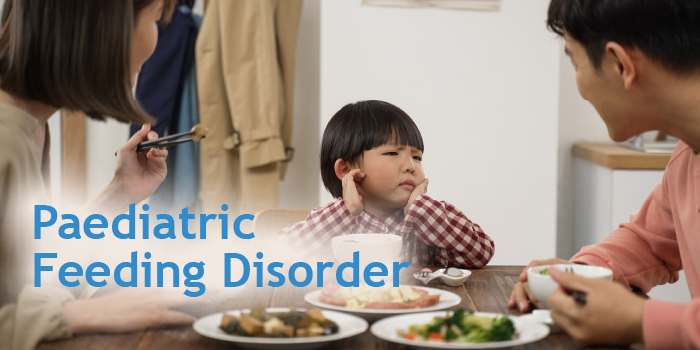
What is Paediatric Feeding Disorder?
Feeding disorders happen when children are very selective about the food they eat. They might only eat certain types of foods, like smooth or crunchy foods, or they might only eat food of a certain brand, shape, or color. Some children have feeding problems because of a medical condition, like reflux or a severe illness, while others struggle with chewing and swallowing. Children with feeding disorders tend to eat only at home because of their pickiness, which is different from children who are just picky eaters.
How common is feeding disorder among children and who is affected?
25% to 45% of children in the normal population are being diagnosed with feeding disorders. Children of all backgrounds can have a feeding disorder. Groups of children who are more likely to be diagnosed with a feeding disorder include premature infants, children with autism, and children with various genetic syndromes. The prevalence of feeding disorders in children with disabilities ranges from 33% to 80%.

What is dysphagia, and can adults experience swallowing difficulties?
Dysphagia is a condition where people have difficulty swallowing food or liquids, and it affects nearly 44% of the global population. Some people have trouble with certain foods, while others can't swallow at all. Symptoms may include coughing, choking, or bringing food back up through the nose, as well as a feeling of food stuck in the throat, drooling, or gurgly voice. Over time, dysphagia can lead to weight loss and repeated chest infections.
|
| Here are some tips to make family meals enjoyable: |
- Establish a regular mealtime routine.
- Provide a comfortable and supportive seating arrangement.
- Offer a variety of textures, temperatures, and flavours to encourage experimentation and new food exploration.
- Allow plenty of time for meals, and provide gentle prompts if necessary to encourage slow and deliberate eating.

- Make mealtimes enjoyable by engaging in conversation, playing music, or creating a pleasant atmosphere.
- Use positive reinforcement, such as verbal praises, to encourage successful eating and swallowing.
- Offer small, frequent meals if full meals are too challenging.
- Avoid pressuring the individual to eat, as this can create anxiety and negative associations with mealtime.
- Above all, remain patient, supportive, and encouraging throughout the mealtime process.
|
|










 Introducing our new feeding and swallowing clinic! We are excited to offer our services to children and adults who have trouble eating and drinking. Our multidisciplinary team of therapists work together to evaluate each individual's needs and create a customized treatment plan. We use the latest technology and research-based methods to provide caring support to both clients and families. Our goal is to help improve our clients' quality of life and create enjoyable mealtime experiences.
Introducing our new feeding and swallowing clinic! We are excited to offer our services to children and adults who have trouble eating and drinking. Our multidisciplinary team of therapists work together to evaluate each individual's needs and create a customized treatment plan. We use the latest technology and research-based methods to provide caring support to both clients and families. Our goal is to help improve our clients' quality of life and create enjoyable mealtime experiences.







